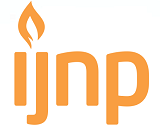Empowering Natural Medicine: Combining Brotowali Extract (T.Crispa) with Lampung Natural Zeolite to Improve Diabetic Wound Healing
DOI:
https://doi.org/10.18196/ijnp.v8i1.19586Keywords:
brotowali extract, diabetes mellitus, diabetic ulcers, tinospora crispa, zeoliteAbstract
Background: Diabetic ulcers are a serious complication that often occurs in people with diabetes mellitus. The complication leads to amputation and causes disability in about 30% of patients.
Objective: The study aims to test the effectiveness of an ointment formulation containing brotowali extract with a combination of Lampung natural zeolite (ZAL) in the healing process of diabetic ulcers.
Methods: The research method used is quasi-experimental with a control group. The sample of this study used mice, with a total of 6 in each group. Before the intervention, blood sugar levels in the samples were increased by injecting streptozotocin. The study was conducted for 14 days. The Mann-Whitney test was used to analyze the data obtained.
Results: The results showed a significant difference in the percentage of wound closure between the control group and the intervention group with p=0.002.
Conclusion: Based on these findings, it can be concluded that an ointment formulation containing brotowali extract with a combination of ZAL effectively accelerates the wound healing process in diabetic mice. Brotowali extract ointment with a combination of Lampung natural zeolites can be used as an alternative in wound care for patients with diabetes mellitus based on herbs and local wisdom so that it will be more easily accepted in the community.
References
Agrawal, S. S., Naqvi, S., Gupta, S. K., & Srivastava, S. (2012). Prevention and management of diabetic retinopathy in STZ diabetic rats by Tinospora cordifolia and its molecular mechanisms. Food and Chemical Toxicology, 50(9), 3126–3132. https://doi.org/10.1016/j.fct.2012.05.057
Ahmad, W., Jantan, I., & Bukhari, S. N. A. (2016). Tinospora crispa (L.) Hook. f. & Thomson: A review of its ethnobotanical, phytochemical, and pharmacological aspects. Frontiers in Pharmacology, 7(MAR), 1–19. https://doi.org/10.3389/fphar.2016.00059
Ahmad, W., Jantan, I., Kumolosasi, E., Haque, M. A., & Bukhari, S. N. A. (2018). Immunomodulatory effects of Tinospora crispa extract and its major compounds on the immune functions of RAW 264.7 macrophages. International Immunopharmacology, 60(April), 141–151. https://doi.org/10.1016/j.intimp.2018.04.046
Arundina, I., Diyatri, I., & Jit, F. Y. (2017). The effect of brotowali stem extract (Tinospora Crispa) towards increasing number of lymphocytes in the healing process of traumatic ulcer on diabetic wistar rat. Journal of International Dental Medical Research, 10(3), 975–980.
Banerjee, A., Singh, S., Prasad, S. K., Kumar, S., Banerjee, O., Seal, T., Mukherjee, S., & Maji, B. K. (2020). Protective efficacy of Tinospora sinensis against streptozotocin induced pancreatic islet cell injuries of diabetic rats and its correlation to its phytochemical profiles. Journal of Ethnopharmacology, 248, 112356. https://doi.org/10.1016/j.jep.2019.112356
Fernandez, M., Shivashekaregowda, N. K., & Yin, Y. (2021). The Potential Role Of Genus Tinospora In Wound Healing: A Review. Science, International Journal of Pharmacy and Pharmaceutical Sciences, 21–29. https://doi.org/10.22159/ijpps.2021v13i4.37980
Gastaldi, G., Pannier, F., Roztočil, K., Lugli, M., Mansilha, A., Haller, H.,
Rabe, E., & Van Rijn, M. J. (2021). Chronic venous disease and diabetic microangiopathy: pathophysiology and commonalities. Int. Angiol, 40, 457–469. https://doi.org/10.23736/S0392-9590.21.04664-2
Haque, A., Islam, A., & Shahriar, M. (2011). Antimicrobial, cytotoxicity and antioxidant activity of Tinospora crispa. Journal of Pharmaceutical and Biomedical Sciences, 12(13), 1–4. https://www.academia.edu/download/37153609/JPBMS_1212_2011.pdf
Hutomo, S., Sooai, C. M., Merry, M. S., Larope, C. G., & Kristiyanto, H. D. (2022). The effect of brotowali (Tinospora crispa L.) stem ethanolic extract on the inhibition of Candida albicans biofilm formation. Majalah Kedokteran Gigi, 55(1), 21–25. https://doi.org/10.20473/j.djmkg.v55.i1.p21-25
Kadja, G., & Ilmi, M. M. (2019). Indonesia natural mineral for heavy metal adsorption: a review. Journal of Environmental Science and Sustainable Development, 2(2), 139-164. https://doi.org/10.7454/jessd.v2i2.1033
Kartini, K., Wati, N., Gustav, R., Wahyuni, R., Anggada, Y. F., Hidayani, R., Raharjo, A., Islamie, R., & Putra, S. E. D. (2021). Wound healing effects of Plantago major extract and its chemical compounds in hyperglycemic rats. Food Bioscience, 41(June 2020), 100937. https://doi.org/10.1016/j.fbio.2021.100937
Li, D., & Wu, N. (2022). Mechanism and application of exosomes in the wound healing process in diabetes mellitus. Diabetes Research and Clinical Practice, 187(January). https://doi.org/10.1016/j.diabres.2022.109882
Liu, Y., Li, C., Feng, Z., Han, B., Yu, D.-G., & Wang, K. (2022). Advances in the Preparation of Nanofiber Dressings by Electrospinning for Promoting Diabetic Wound Healing. Biomolecules, 12(12), 1727. https://doi.org/10.3390/biom12121727
Mariani, H., Mahdi, N., & Umam, K. (2023). BIOSINTESIS NANOPARTIKEL PERAK (AgNPs) DENGAN EKSTRAK DAUN KIRINYUH (Chromolaena odorata) TERIMPREGNASI ZEOLIT DALAM MENGHAMBAT BAKTERI PENYEBAB JERAWAT. Jurnal Biosilampari : Jurnal Biologi, 5(2), 187–198. https://doi.org/10.31540/biosilampari.v5i2.1833
Millah, U. (2021). Identifikasi Bakteri Staphylococcus Sp. Pada Pasien Diabetes Mellitus Dengan Komplikasi Luka Gangren. STIKes Ngudia Husada Madura.
Nasseri, S., & Sharifi, M. (2022). Therapeutic potential of antimicrobial peptides for wound healing. International Journal of Peptide Research and Therapeutics, 28, 1–15. https://doi.org/10.1007/s10989-021-10350-5
Nurhayati, N. (2022). Identifikasi Senyawa Anti Mikroba Ekstrak Etanol Batang Brotowali (Tinospra Crispa (L.) Terhadap Staphylococcus Aureus, Bacillus Substillis, Dan Candida Albicans Dengan Metode Klt Bioautografi. Jurnal Ayurveda Medistra, 4(1). https://doi.org/10.51690/medistra-jurnal123.v4i1.54
Philip, S., Tom, G., & Vasumathi, A. V. (2018). Evaluation of the anti-inflammatory activity of Tinospora cordifolia (Willd.) Miers chloroform extract – a preclinical study. Journal of Pharmacy and Pharmacology, 70(8), 1113–1125. https://doi.org/10.1111/jphp.12932
Purwaningsih, N. S., Romlah, S. N., & Choirunnisa, A. (2020). Literature Review Uji Evaluasi Sediaan Krim. Edu Masda Journal, 4(2), 108–120. https://doi.org/10.52118/edumasda.v4i2.102
Qi, Y., Qian, K., Chen, J., Yifeng, E., Shi, Y., Li, H., & Zhao, L. (2021). A thermoreversible antibacterial zeolite-based nanoparticles loaded hydrogel promotes diabetic wound healing via detrimental factor neutralization and ROS scavenging. Journal of Nanobiotechnology, 19(1), 1–20. https://doi.org/10.1186/s12951-021-01151-5
Riswanto, W. (2022). Hubungan Patogen Pembentuk Biofilm Terhadap Perbaikaninfeksi Luka Pasca Antibiotik Definitif. Doctoral Dissertation, Universitas Gadjah Mada.
Salsabila, L. S., Shafira, I., Azhar, M. A., Ryanti, G. A. S., Aurelia, R., & Sitorus, M. A. H. (2023). Formulasi Dan Evaluasi Balsam Aroma Terapi Menggunakan Minyak Lemon (Oleum Citri. L) Dengan Cera Alba Sebagai Stabilizing Agent. Indonesian Journal of Health Science, 3(2), 155–160. https://doi.org/10.54957/ijhs.v3i2.448
Sharma, P., Dwivedee, B. P., Bisht, D., Dash, A. K., & Kumar, D. (2019). The chemical constituents and diverse pharmacological importance of Tinospora cordifolia. Heliyon, 5(9). https://doi.org/10.1016/j.heliyon.2019.e02437
Singh, A. K., Preethi, B. O., Singh, H., Gangwar, A., Niyogi, D., & Devi, K. S. (2016). Comparative evaluation of the wound healing potential of Tinospora cordifolia and its combination with local Insulin therapy in diabetic rabbits. Journal of Pharmacognosy and Phytochemistry, 6(4), 1812–1817.
Singh, B., Nathawat, S., & Sharma, R. A. (2021). Ethnopharmacological and phytochemical attributes of Indian Tinospora species: A comprehensive review. Arabian Journal of Chemistry, 14(10), 103381. https://doi.org/10.1016/j.arabjc.2021.103381
Soesilowati, S. (2021). Implementasi Visual Manajemen Terhadap Kegiatan Operasional dan Keamanan Laboratorium Biokimia. Jurnal Pengelolaan Laboratorium Pendidikan, 3(1), 8–13. https://doi.org/10.14710/jplp.3.1.8-13
Subandi, E., & Sanjaya, K. A. (2020). Efektifitas Modern Dressing Terhadap Proses Penyembuhan Luka Diabetes Melitus Tipe 2. Jurnal Kesehatan, 10(1), 1273–1284. https://doi.org/10.38165/jk.v10i1.7
Sun, H., Saeedi, P., Karuranga, S., Pinkepank, M., Ogurtsova, K.,
Duncan, B. B., Stein, C., Basit, A., Chan, J. C. N., Claude Mbanya, J., Pavkov, M. E., Ramachandaran, A., Wild, S. H., James, S., Herman, W. H., Zhang, P., Bommer, C., Kuo, S., Boyko, E. J., & Magliano, D. J. (2023). Erratum to “IDF Diabetes Atlas: Global, regional and country-level diabetes prevalence estimates for 2021 and projections for 2045” [Diabetes Res. Clin. Pract. 183 (2022) 109119] (Diabetes Research and Clinical Practice (2022) 183, (S0168822721004782), (1. Diabetes Research and Clinical Practice, 204(October), 110945. https://doi.org/10.1016/j.diabres.2023.110945
Susanti, L., Wahidah, L. K., & Viogenta, P. (2018). Optimasi Zeolit Alam Lampung (ZAL) Sebagai Penstabil Sediaan Antibakteri Esktrak Buah Mengkudu (Morinda citrifolia L.). Jurnal Farmasi Lampung, 7(2). https://doi.org/10.37090/jfl.v7i2.54
Vijendren, S., Jothi, S., Rajandran, K., & Muruganandham, V. (2017). Assessment of in-vitro wound healing activity of the Tinospora crispa Extracts. Assessment. https://doi.org/10.47893/IJPPT.2017.1016
Yang, D. J., Moh, S. H., Son, D. H., You, S., Kinyua, A. W., Ko, C. M., Song, M., Yeo, J., Choi, Y. H., & Kim, K. W. (2016). Gallic Acid Promotes Wound Healing in Normal and Hyperglucidic Conditions. Molecules, 21(7), 1–15. https://doi.org/10.3390/molecules2107089
Downloads
Published
Issue
Section
License
License
Articles published in the IJNP (Indonesian Journal of Nursing Practices) are licensed under a Attribution 4.0 International (CC BY 4.0) license. You are free to:
- Share — copy and redistribute the material in any medium or format.
- Adapt — remix, transform, and build upon the material for any purpose, even commercially.
This license is acceptable for Free Cultural Works. The licensor cannot revoke these freedoms as long as you follow the license terms. Under the following terms:
Attribution — You must give appropriate credit, provide a link to the license, and indicate if changes were made. You may do so in any reasonable manner, but not in any way that suggests the licensor endorses you or your use.
- No additional restrictions — You may not apply legal terms or technological measures that legally restrict others from doing anything the license permits.
Copyright
Authors who publish with IJNP (Indonesian Journal of Nursing Practices) agree to the following terms:
- Authors retain copyright and grant IJNP (Indonesian Journal of Nursing Practices) the right of first publication with the work simultaneously licensed under an Attribution 4.0 International (CC BY 4.0) that allows others to remix, adapt and build upon the work with an acknowledgment of the work's authorship and of the initial publication in IJNP (Indonesian Journal of Nursing Practices).
- Authors are permitted to copy and redistribute the journal's published version of the work (e.g., post it to an institutional repository or publish it in a book), with an acknowledgment of its initial publication in IJNP (Indonesian Journal of Nursing Practices).














